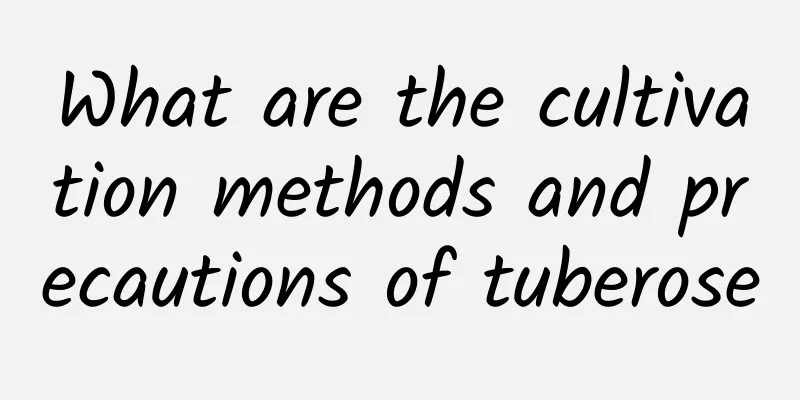Watermelon Diseases Pictures and Pesticide Control

|
Watermelon is a common fruit in daily life and is very popular among consumers. However, at different stages of watermelon growth, it will be infected with different diseases, which will affect its yield and quality and require timely prevention and control. Here we talk about the complete picture of watermelon diseases and pesticide prevention. 1. Cataplexy The pathogens are mostly fungi of the genus Pythium, which mainly harm unemerged and newly emerged seedlings. In the early stage of the disease, yellow to yellowish brown water-soaked constriction spots appear at the base of the stems of the seedlings near the ground. The cotyledons do not wilt, but the seedlings have already fallen off suddenly. In severe cases, the base of the stem will rot, and white mycelium will be produced when the humidity is high. The control agents include oxadiazine·mancozeb, cyathiacarb hydrochloride, cyazolin, meconium-methyl, myclobutanil, oxadiazine·mancozeb, oxadiazine·mancozeb, etc. 2. Anthrax The pathogen is Colletotrichum spp. of the Cucurbitaceae family, which can occur throughout the entire growing period of watermelon and can infect all above-ground parts. Circular brown spots appear on the cotyledons with light green halos on the edges; circular or irregular water-soaked spots begin to appear on the true leaves, which then turn into dark brown with purple-black halos on the edges and obvious whorls. When the petioles or stems are infected, water-soaked, pale yellow circular spots initially appear, which later develop into slightly sunken dark brown spindle-shaped spots. When the fruit is infected, water-soaked, sunken brown spots appear, and cracks often appear. Under high humidity conditions, a pink sticky substance forms in the middle of the spots. The control agents include Yingji (oxime·tebuconazole dry suspension), fenpropimorph, silazole·myclobutanil, myclobutanil, pyraclostrobin, etc. 3. Disease The pathogen is Phytophthora melonensis, which can cause damage to watermelon throughout its entire growth period, but the disease is more serious during the adult plant stage. The affected leaves develop water-soaked spots on the edges. The disease progresses very quickly, and the edges are not obvious. The leaves may rot when the humidity is high, and become brittle and easy to crack when dry. In the early stage of the disease, the fruit has dark green water-soaked spots, and then soft rot and depressions are obvious. In humid conditions, a large amount of white mold grows on the surface of the diseased part. The control agents include metalaxyl·mancozeb, oxazolidinone, methocarb·mancozeb, copper oxychloride·metalaxyl, oxazolidinone·metalaxyl, etc. 4. Vine blight The pathogen is Mycosphaeria cucurbitae, which mainly harms the leaves, vines and fruits of watermelon, with the leaves and vines being more seriously affected. After the leaves are infected, lesions mostly appear on the leaf edges, with yellow halos around the lesions and small black spots scattered on the diseased parts, which will dry up and crack in the later stage. The most obvious feature of stem and vine damage is the outflow of amber-colored gelatinous substances, which may form longitudinal cracks after drying. The control agents include pyraclostrobin, Yingji (oxathiapiprolin·tebuconazole dry suspension), fenpropimorph, carbendazim·thiophanate-methyl, mancozeb, etc. 5. Fusarium wilt The pathogen is Fusarium oxysporum, which can occur throughout the growing period of watermelon. After the disease occurs in the seedling stage, the number of fibrous roots decreases, and the plants quickly wither, turn yellow, and fall over; the disease occurs in the adult stage, and the aboveground parts wilt severely. They can recover in the early stage, but die in the later stage. The base of the stem does not constrict or rot, and the vascular bundles of the stems and vines change color and grow upward. The control agents include Bacillus subtilis, carbendazim-methyl, thiram-methyl, and sinocycline. 6. Leaf blight The pathogen is Alternaria cucurbitacis, and the disease is more serious in the middle and late stages of watermelon growth. In the early stage of the disease, leaves produce brown spots that turn green, and then expand to form brown to dark brown. The spots are mainly concentrated on the leaf edges and veins. When the field is dry, they are mostly small round brown spots. If the humidity is high, they can merge into large spots, accompanied by a withering appearance. The control agents include manganese zinc, manganese sulfamethoxam, tebuconazole, chlorpyrifos, and pyraclostrobin. 7. Bacterial fruit spot The pathogen is Acidovorax avenae subspecies citrullus, a bacterial disease that can harm watermelon leaves, fruits, etc. When the leaves become diseased, there are water-like spots near the veins. The spots grow along the veins and are long and narrow. When the fruits become diseased, there are large, irregular olive-colored water-soaked patches. In the later stage, the fruit skin cracks and is easily mixed with other diseases. The control agents include spring thunder·copper king, chlorothiazide, chlorobromoisocyanuric acid, copper hydroxide, thiophanate-copper, etc. 8. Green mottle mosaic The virus belongs to the tobacco mosaic virus genus and its symptoms are obvious on watermelon leaves and fruits. When the disease occurs, the leaves fade and become slightly yellow with mottled spots and raised bumps; dark green spots appear on the surface of the diseased fruit, the inside rots into a gourd-shaped cavity, and the flesh turns dark red. Since viral diseases cannot be cured, you can try using guanidine hydrochloride + Sea Elf biostimulant foliar type to relieve the symptoms in the early stages of the disease. That’s it |
<<: Complete picture and prevention of corn seedling diseases
>>: Prevention and control methods of the ten most common corn diseases
Recommend
How to breed silkworms
Silkworm farming is favored due to its low cost, ...
Cultivation method of Cryptomeria fortunei
1. Soil: Cryptomeria fortunei grows faster in aci...
The lowest temperature for Venus flytrap, how to keep it alive in winter
1. Minimum temperature In the winter of the Venus...
Japanese cherry blossom pruning techniques
Pruning mechanism of Japanese late cherry blossom...
What is the spacing between rows and plants when transplanting Forsythia suspensa? What is the time and technique for transplanting old piles?
1. What is the spacing between rows and plants wh...
What to do if the leaves of the ball orchid turn yellow
Choice of flower pots The reason why the Hoya tur...
What is Job's tears
What is it? It is the seed of Coix lachryma-jobi,...
How to germinate hawthorn seeds How to germinate hawthorn seeds
Hawthorn seed germination method 1. Warm water ge...
Is copper coin grass suitable for indoor cultivation?
1. More suitable The pennywort is relatively suit...
How to grow potted chrysanthemums? How to grow potted chrysanthemums?
Chrysanthemum pot cultivation method 1. Soil: Whe...
The difference between Osaka pine and golden five-needle pine
1. The difference between leaves Osaka pine is on...
How to care for hydroponic garlic
Garlic hydroponic method First, you need to choos...
How to water tiger pineapple
What water is needed? The quality of water is ver...
When to plant radishes?
Radish is a vegetable with high nutritional value...
How to prune a dragon blood tree (pruning time and method)
When to prune the dragon blood tree The best time...









